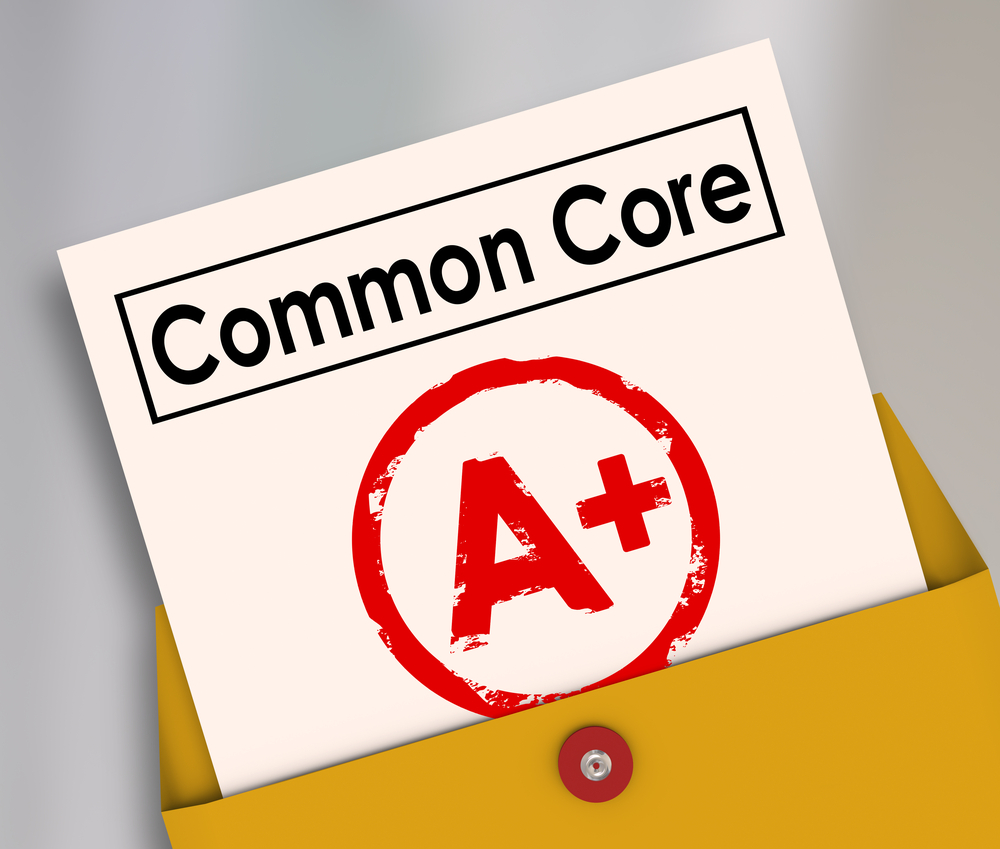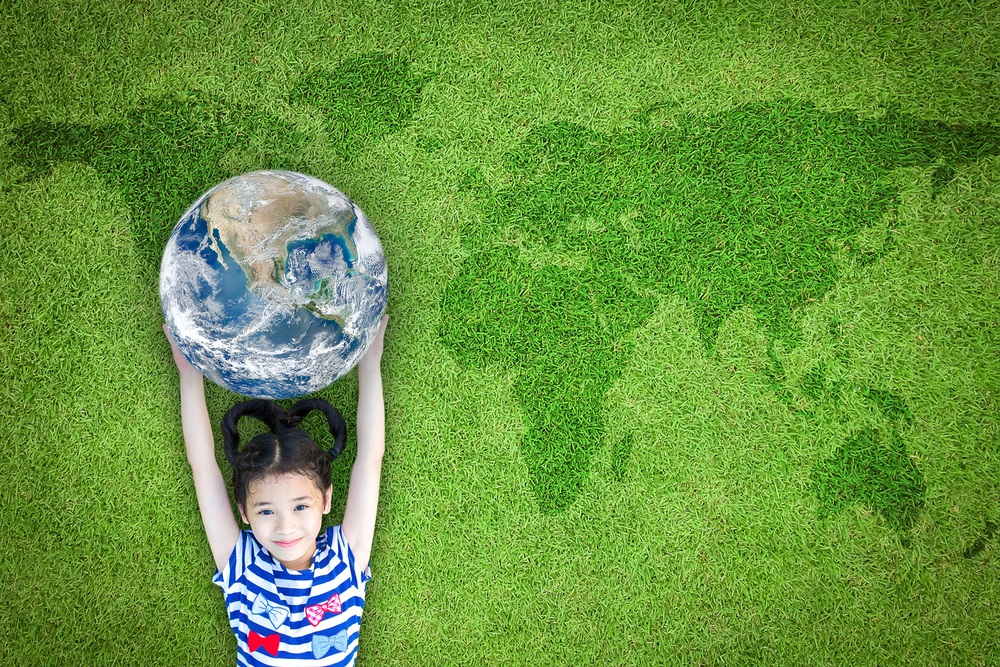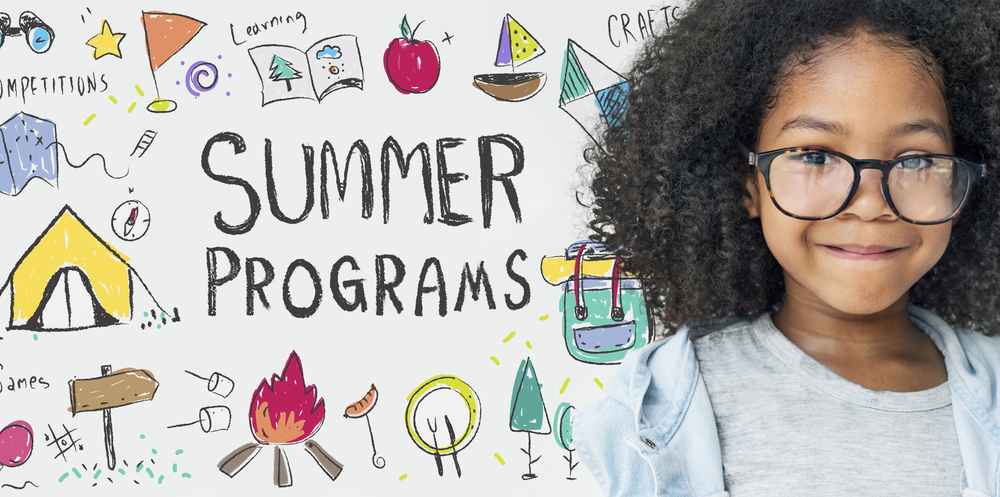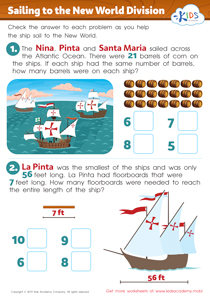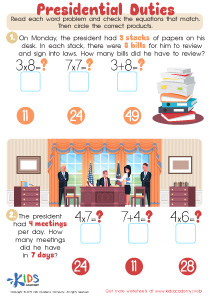Understanding communities Community Worksheets for Ages 4-9
4 filtered results
-
From - To
Introducing "Understanding Communities: Community Worksheets for Ages 4-9"! Our printable worksheets make learning about communities engaging and fun for young children. Tailored for children aged 4-9, these educational resources cover key social studies concepts, teaching kids about different community roles, local geography, and social responsibilities. Through interactive activities and vibrant illustrations, children gain a sense of belonging and respect for their surroundings. Perfect for both classroom and home use, these worksheets support foundational learning skills and provide a hands-on approach to understanding how communities function. Spark curiosity and essential life skills with our comprehensive community worksheets today!
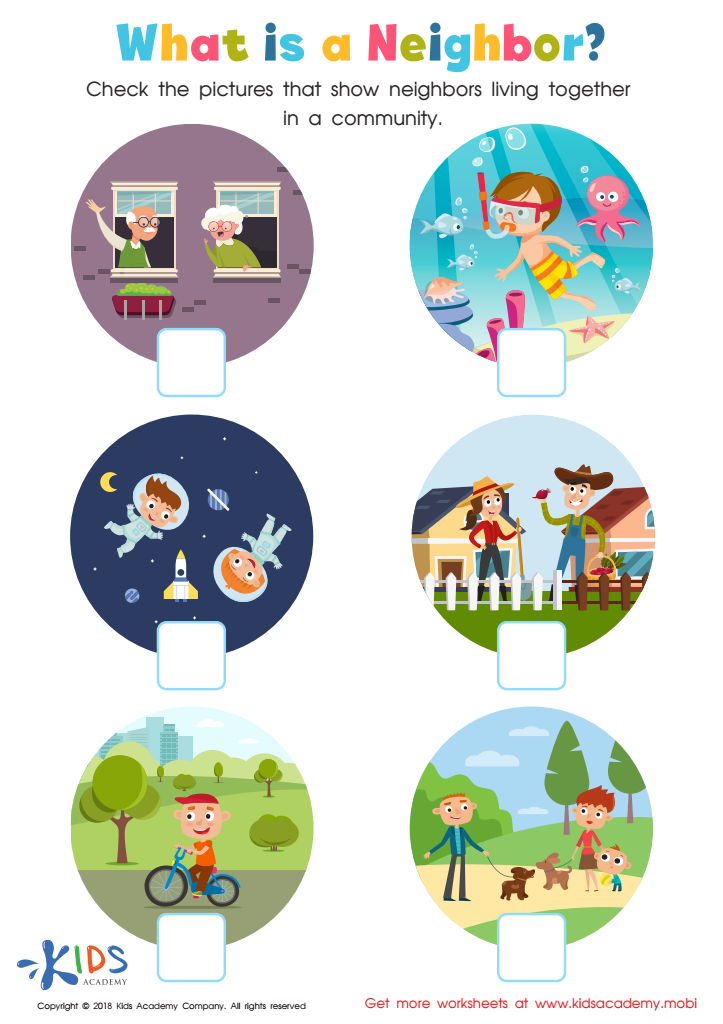

What is a neighbor Worksheet
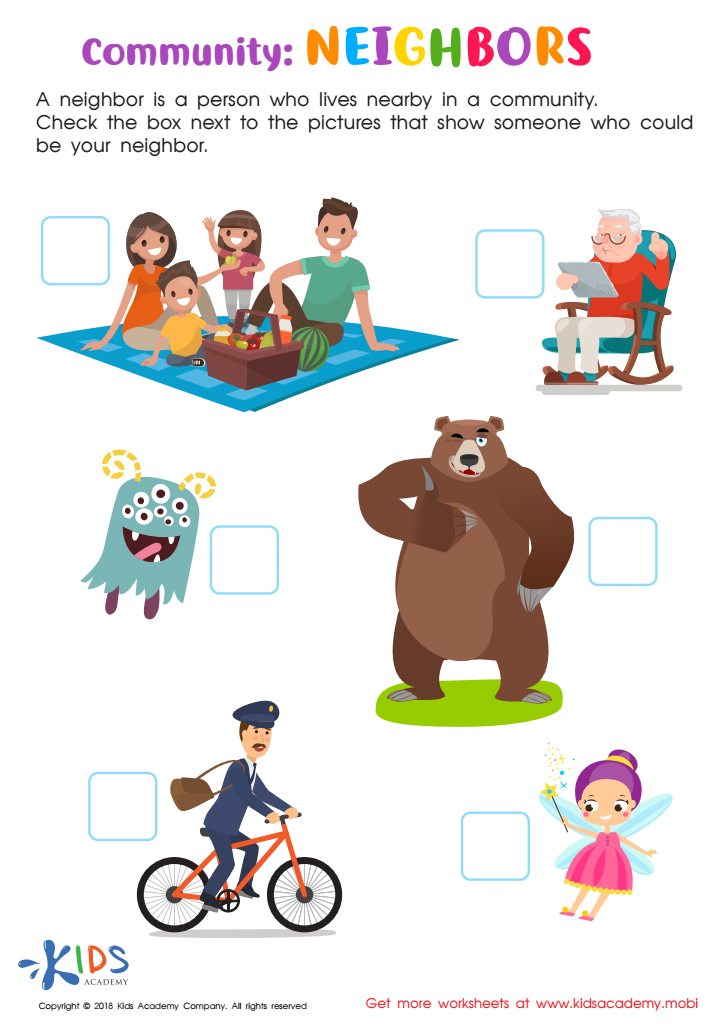

Community: Neighbors Worksheet


Communities We Belong to Worksheet
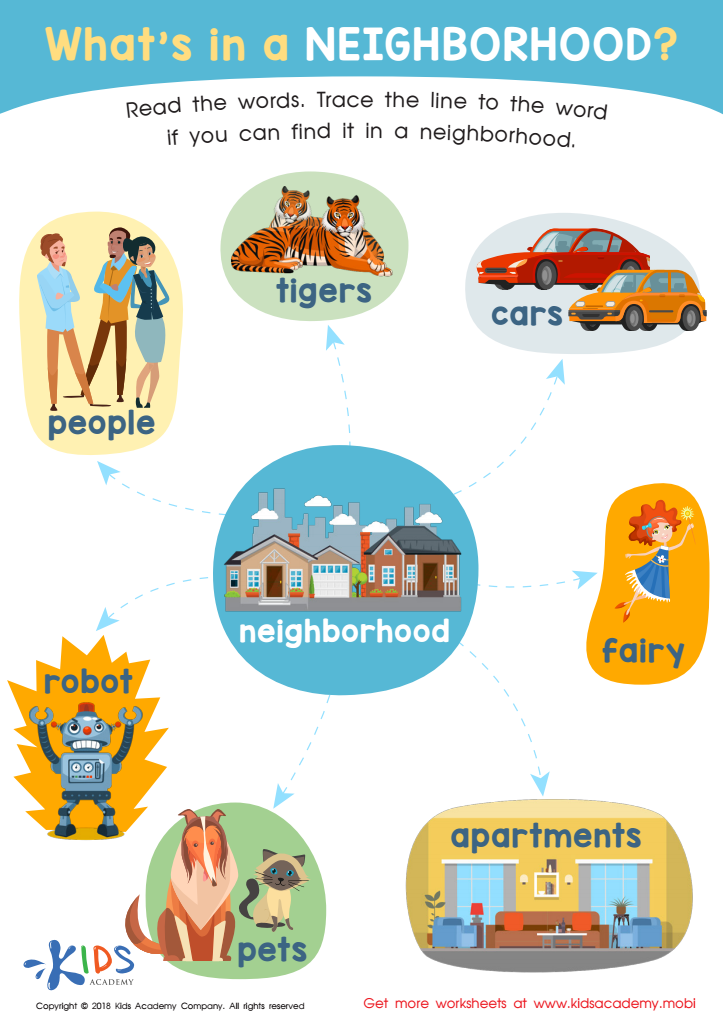

What's in a Neighborhood? Worksheet
Understanding communities is crucial for young children, both at home and in school environments, fostering their social and emotional development. For parents and teachers, nurturing a sense of community in children aged 4-9 can lay a strong foundation for cooperative behavior and empathy.
At a young age, children are beginning to grasp the concept of relationships and how they fit into larger groups. By immersing them in community-based learning, children learn empathy, respect, and cooperation. They understand the importance of helping others and the roles people play in creating a harmonious society.
Educating children about different types of communities—families, classrooms, neighborhoods—also enriches their knowledge of diversity. Exposure to diverse perspectives broadens their understanding and acceptance of different cultures, beliefs, and lifestyles. This nurtures a worldview that values inclusivity and equality, essential virtues in our increasingly global society.
Moreover, being part of a community also bolsters children’s confidence and sense of belonging. When children feel accepted and valued in their communities, they develop a positive self-image and a better capacity for overcoming challenges.
Thus, parents and teachers should care about teaching children the concept of communities, as it greatly influences their early social skills, emotional intelligence, and ability to navigate the wider world compassionately and competently.
 Assign to My Students
Assign to My Students



